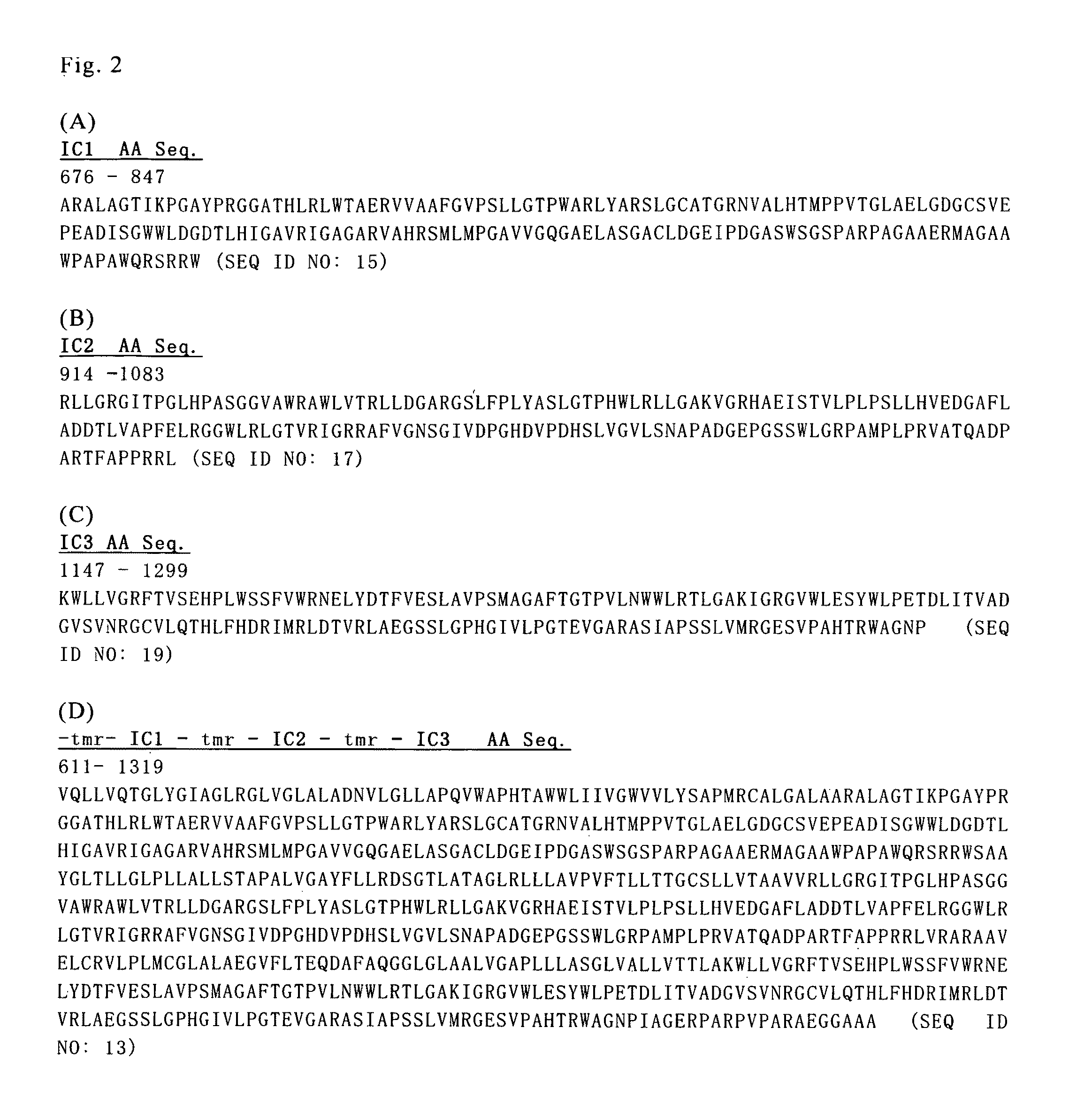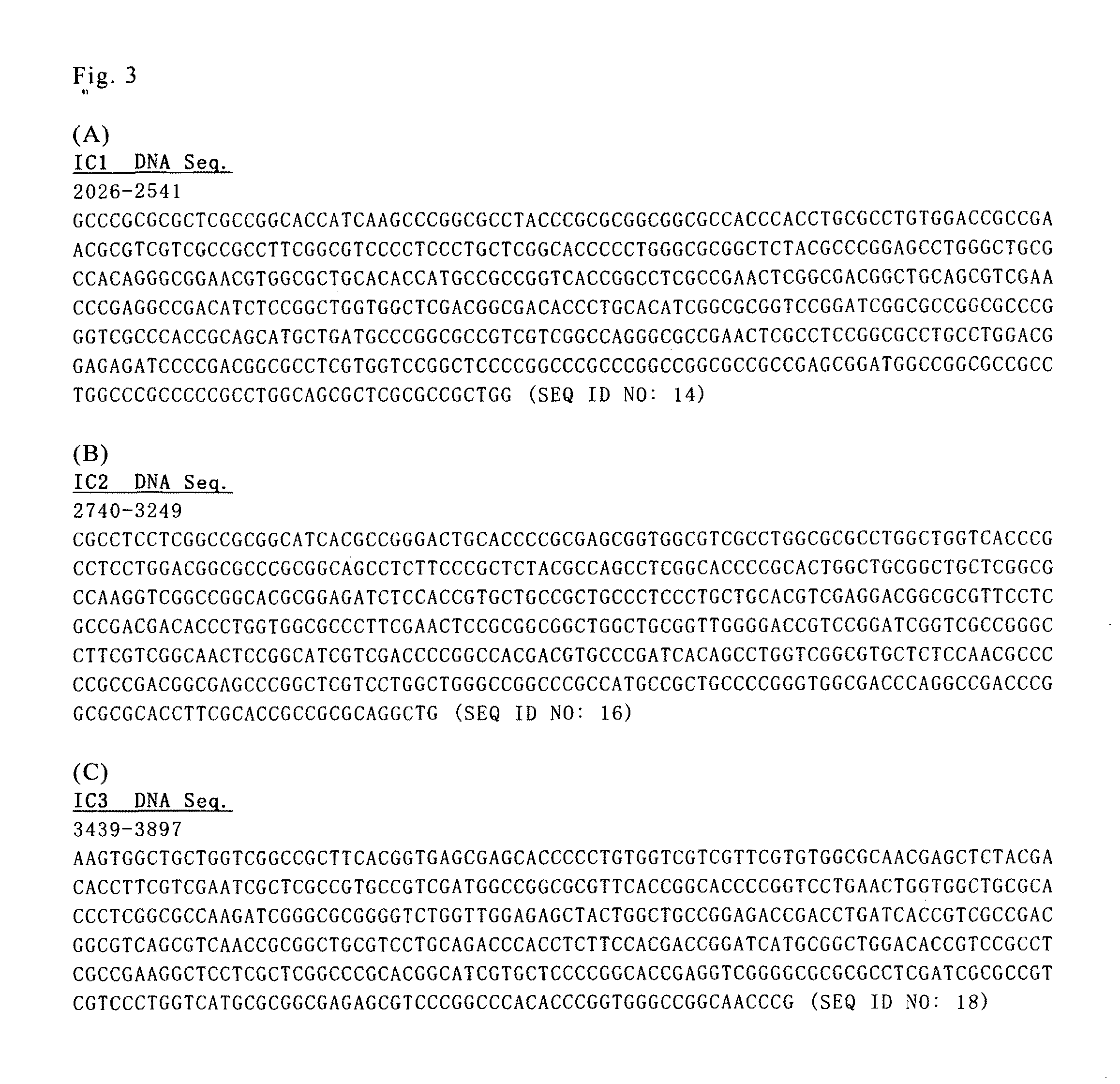Polyamino acid synthetase and gene encoding the same
a polyamino acid synthetase and gene technology, applied in the field of new polyamino acid synthetase and gene encoding the same, can solve problems such as difficult control, and achieve the effects of reducing side reactions, reducing side reactions, and saving energy
- Summary
- Abstract
- Description
- Claims
- Application Information
AI Technical Summary
Benefits of technology
Problems solved by technology
Method used
Image
Examples
example 1
Purification of ε-Poly-L-Lysine Biosynthetic Enzyme from Streptomyces Albulus Strain IFO14147 which Produces ε-Poly-L-Lysine and Examination of Enzymatic Properties Thereof
(1) Culture of Streptomyces albulus Strain IFO14147, which is a ε-Poly-L-Lysine Producing Strain
Culture of the strain was performed in a M3G medium (5% glucose, 0.5% yeast extract, 1% ammonium sulfate, 0.08% K2HPO4, 0.136% KH2PO4, 0.05% MgSO4.7H2O, 0.004% ZnSO4.7H2O, 0.003% FeSO4.7H2O (pH 6.8)). 100 ml of preculture solution obtained by aerobically culturing at 30° C. for 20 hours was added to 2 L of medium, and using a 3 L jar fermenter (Marubishi Bioengineering), culturing was carried out aerobically at 30° C. at 500 rpm with the ventilation volume of 2.5 L / min. As the bacterium grew, pH of the culture solution gradually decreased. Therefore, from the time point at which pH reached 4.2 that is most suitable for ε-poly-L-lysine production, 10% aqueous ammonia was added to the culture solution, thereby maintaining...
example 2
Cloning of ε-Poly-L-Lysine Biosynthetic Enzyme Gene
(1) Analysis of Amino Acid Sequence of ε-Poly-L-Lysine Biosynthetic Enzyme
The amino acid sequence was analyzed by LC-MS / MS. ε-poly-L-lysine biosynthetic enzyme was fractionated by means of SDS-polyacrylamide electrophoresis, and after stained with CBB-R250, the band of ε-poly-L-lysine biosynthetic enzyme was cut out. To the sample gel piece, Tris buffer solution containing trypsin (pH 8.0) was added to perform in gel digestion at 35° C. for 20 hours. Trypsin-digested peptide solution extracted from the gel piece was subjected to LC-MS / MS analysis. LC-MS / MS analysis was carried out under the following conditions.
HPLC apparatus: MAGIC 2002 nano LC system (Michrom Bioresources)
Column: Magic C18 column (0.1×50 mm, Michrom Bioresources)
Solvent A: 0.1% formic acid+2% acetonitrile
Solvent B: 0.1% formic acid+90% acetonitrile
Gradient: 10% Solvent B (0 to 1 min)→50% Solvent B (21 min)
Flow rate: 250 to 300 nl / min
Mass Spectroscope: Q-T of 2 (Wa...
example 3
Enzymatic Production of ε-Poly-L-Lysine
A reaction solution (200 μl) containing 2 mM 5 mM MgCl2, 5 mM ATP, 1 mM DTT, 20% glycerol, 0.2% (w / v) NP-40, 100 mM TAPS-NaOH buffer solution (pH 8.5) and about 10 μg of the purified enzyme preparation was put into a 1.5 ml microtube, and it was incubated at 25° C. for 120 minutes. ε-poly-L-lysine produced in a manner similar to that in Example 1 was quantitated 20, 40, 80 and 120 minutes after the initiation of the reaction. The results are shown in Table 2.
TABLE 2Production of ε-poly-L-lysine by enzymatic reactionReaction timeConcentration of ε-poly-L-lysine(min)(μg / ml)2033.14059.78090.8120102.1
PUM
| Property | Measurement | Unit |
|---|---|---|
| Temperature | aaaaa | aaaaa |
| Fraction | aaaaa | aaaaa |
| Fraction | aaaaa | aaaaa |
Abstract
Description
Claims
Application Information
 Login to View More
Login to View More - R&D
- Intellectual Property
- Life Sciences
- Materials
- Tech Scout
- Unparalleled Data Quality
- Higher Quality Content
- 60% Fewer Hallucinations
Browse by: Latest US Patents, China's latest patents, Technical Efficacy Thesaurus, Application Domain, Technology Topic, Popular Technical Reports.
© 2025 PatSnap. All rights reserved.Legal|Privacy policy|Modern Slavery Act Transparency Statement|Sitemap|About US| Contact US: help@patsnap.com



